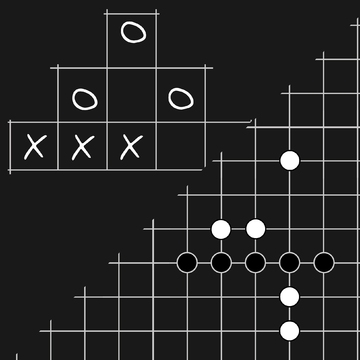Tired of the classic Tic-Tac-Toe? We invite you to explore our carefully curated list of 15 games similar to Tic-Tac-Toe. Additionally, as a special bonus at the end, we have prepared an original game created by artificial intelligence. We hope you won't be disappointed!
1. Ultimate Tic-Tac-Toe
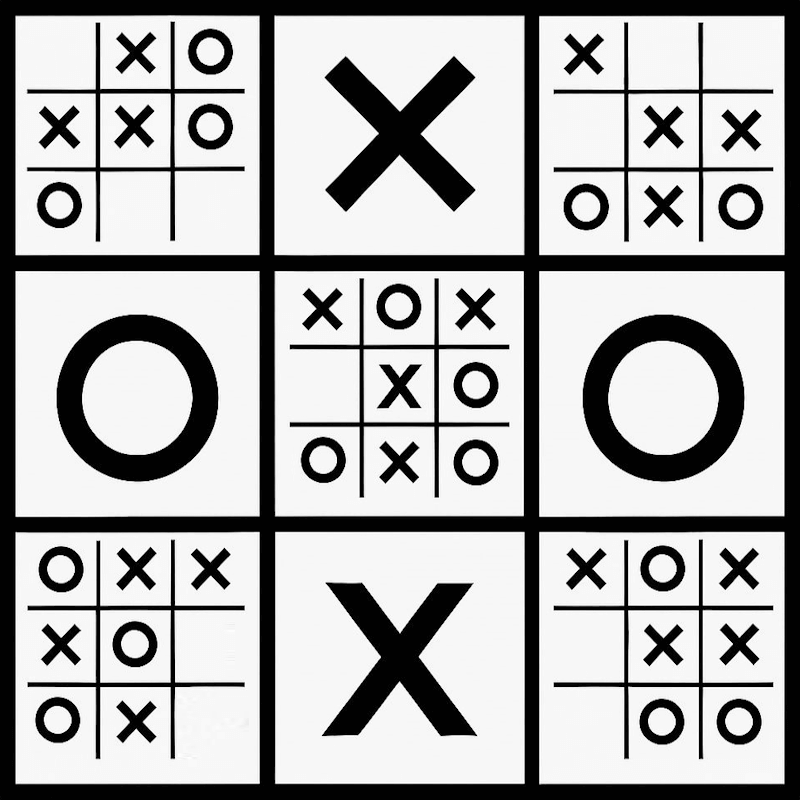
Ultimate Tic-Tac-Toe is an advanced and more complex version of the classic Tic-Tac-Toe game.
Number of Players: 2
Game Equipment:
- A sheet of paper with marked fields or an online version of the game, such as here.
- A pen or pencil.
Basic Rules:
- Players take turns placing their symbol (cross or nought) in one of the cells on one of the smaller fields.
- The cell chosen by a player in a smaller field determines in which smaller field the opponent must make their next move (for example, if a player places a symbol in the bottom right corner of a small field, the opponent's next move must be made in the bottom right small field of the larger grid).
- To win the game, one must form a line of three of their symbols on the larger field by winning in the smaller fields.
- The game continues until one of the players forms the required sequence on the larger field or until all moves are exhausted.
Objective of the Game: To form a winning combination on the larger field while simultaneously preventing the opponent from doing the same.
2. Dots

Dots is a strategic game that requires attention and planning skills.
Number of Players: 2
Game Equipment:
- A grid-lined sheet of paper.
- A pen or pencil.
Basic Rules:
- At the start of the game, the playing field is an empty grid.
- Players take turns placing a dot at the intersections of the grid lines.
- Each surrounded enemy dot becomes the territory of the player who encircled it.
- The game continues until all the free cells are filled or until no new territories can be created.
- The winner is the player who captures the majority of the field by the end of the game.
Objective of the Game: To surround the opponent's dots, creating enclosed areas.
3. Battleship
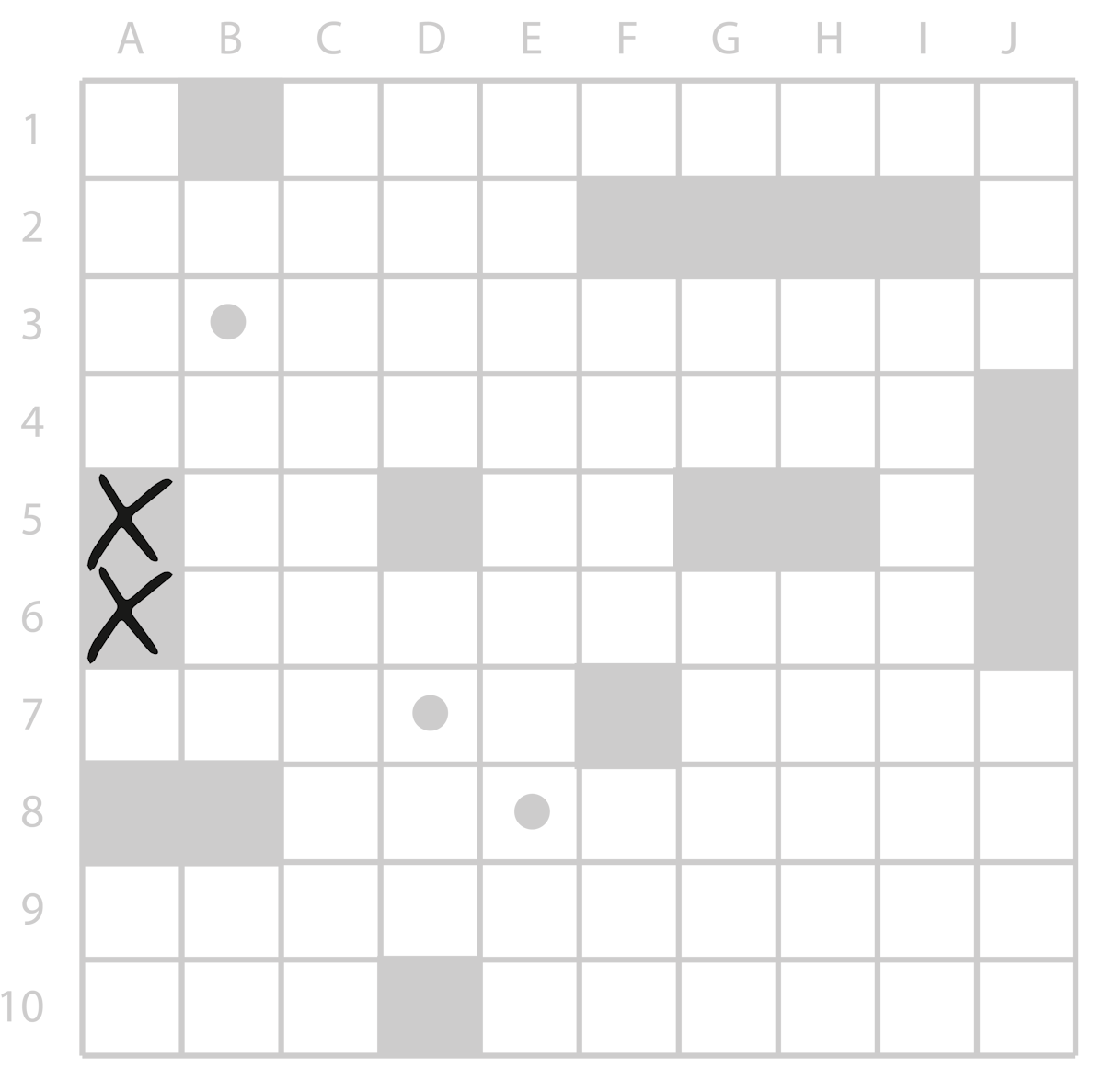
Battleship is a game of logic, strategy, and intuition, where players attempt to determine the location of the enemy's ships and be the first to destroy the opponent's fleet.
Number of Players: 2
Game Equipment:
- Two game boards, each divided into cells (usually 10x10).
- Pencils or pens for marking.
- A set of "ships" for each player, including various types of ships (such as battleships, cruisers, destroyers, and submarines), each occupying a specific number of cells.
Basic Rules:
- Each player at the beginning of the game positions their ships on their board. Ships must not intersect and can be placed either horizontally or vertically.
- Players take turns "firing" at the opponent's ships by calling out coordinates on the opponent's grid (e.g., "A4", "B7").
- If a player hits an opponent's ship, the opponent must say "Hit!" or "Sunk!", depending on whether the ship is damaged or destroyed.
- The game continues until one of the players sinks all of the opponent's ships.
Objective of the Game: To sink all of the opponent's ships.
4. Erase Numbers

Erase Numbers is an exciting, dynamic game where the main "weapon" is an eraser. Get ready for an intense battle over each number!
Number of Players: 2
Game Equipment:
- A sheet of paper.
- A pen or pencil.
- An eraser.
Basic Rules:
- Each player writes a sequence of numbers from 0 to 9 in any order and combination, with a recommended starting length of 20 numbers.
- Example sequence: 7,3,9,8,0,2,4,6,5,3,8,4,3,7,0,9,2 (any other sequence can be chosen).
- On their turn, a player can perform one of two actions:
- Decrease one of the numbers on their field, but not below zero.
- Erase any zero and all numbers to the right of it, reducing the length of the sequence.
- The player who erases the last zero on their field loses.
Objective of the Game: Tactically decrease or remove numbers, trying to force the opponent to erase the last zero on their field while avoiding doing so yourself.
5. Palm Game

Palm Game is a game that tests speed of reaction, attention, and the ability to quickly navigate numbers.
Number of Players: 2
Game Equipment:
- Two sheets of grid paper.
- A pen or pencil.
Basic Rules:
- Each player traces the outline of their palm on their sheet of paper.
- Inside the palm outline, players randomly arrange numbers from 1 to a pre-agreed number.
- One player calls out a random number, and the other tries to find this number on the drawing of their palm as quickly as possible.
- Meanwhile, the first player marks crosses in the cells on their sheet, starting from the top left cell.
- The game continues until one of the players fills all the cells on their field with crosses.
- The winner is the one who fills their field with crosses the fastest.
Objective of the Game: Quickly find the called number on the drawing of your palm and fill your field with crosses, beating your opponent.
6. Snake Game

Snake is a game that tests logic, attention, and dynamic reaction.
Number of Players: 2
Game Equipment:
- A sheet of grid paper.
- A pen or pencil.
Basic Rules:
- Each player starts with one small continuous snake.
- In one turn, players lengthen their snake by one cell. Moves can be made in any direction, but not diagonally.
- The lines of the snakes must not cross. Players can use the edges of the playing field to extend their snake, but cannot do so from sides painted in their "own" color.
- The game ends when one of the players can no longer lengthen their snake.
- The winner is the player who can continue to extend their snake when their opponent gets stuck.
Objective of the Game: Strategically manage the growth of your snake, avoiding collisions and dead ends, to stay in the game as long as possible.
7. Tanks

This game is an original way of competing in the skill of precise aiming.
Number of Players: 2
Game Equipment:
- A standard sheet of paper.
- A pen or pencil.
- Optionally: a template for tanks.
Basic Rules:
- Both players draw an equal number of tanks on different sides of the sheet or use pre-prepared templates.
- To attack, a player makes a large dot on their side of the sheet opposite the opponent's tank.
- The sheet is then folded so that the dot is mirrored onto the opponent's side, and the player traces it.
- Upon unfolding the sheet, players check if the dot hit a tank. If so, that tank is considered destroyed.
- Turns are taken alternately.
- The winner is the one who first destroys all the opponent's tanks.
Objective of the Game: Destroy the opponent's tanks with precise "shots" before they do the same to yours, demonstrating your dexterity.
8. Block Puzzles
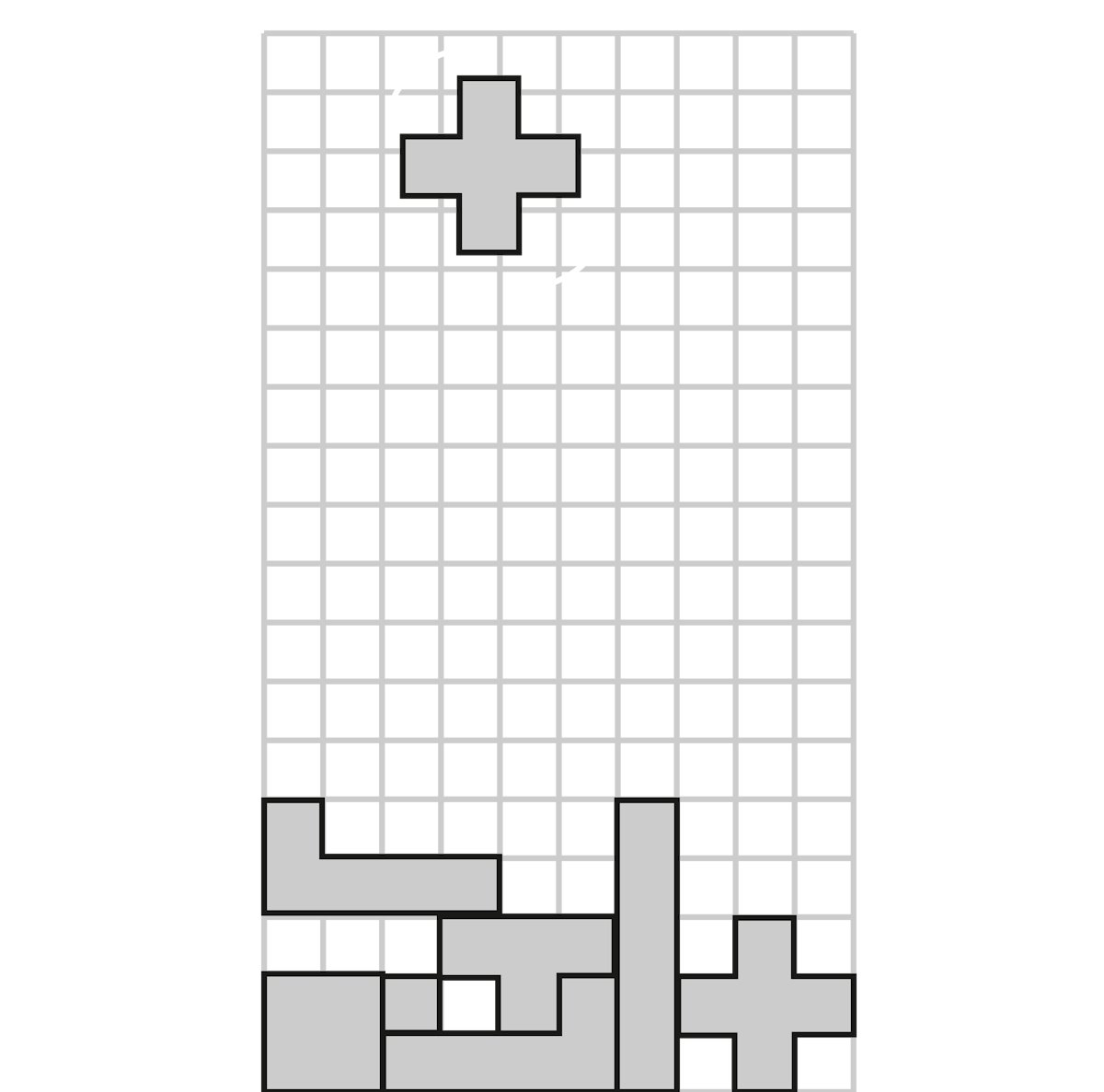
Block Puzzles are games that involve coordination, reaction, and strategic planning.
Number of Players: 1
Game Equipment:
- A game board, usually a vertical rectangle.
- A set of falling geometric shapes (blocks) of different forms.
Basic Rules:
- At the start of the game, blocks of various shapes fall from the top of the playing field.
- The player moves and rotates the blocks horizontally and vertically, trying to create horizontal lines without gaps.
- Each fully filled horizontal line disappears, freeing up space for new blocks.
- The game continues until the blocks reach the top edge of the field.
Objective of the Game: Score as many points as possible by clearing lines and preventing the playing field from filling to the top.
9. Dots and Boxes

Dots and Boxes is an intellectual game combining elements of geometric planning and tactical calculation.
Number of Players: 2
Game Equipment:
- A grid-lined sheet of paper.
- A pen or pencil (possibly of different colors).
Basic Rules:
- At the start of the game, the playing field is a grid of dots.
- Players take turns connecting two adjacent dots with a straight line.
- The goal is to create as many squares as possible.
- When a player forms a square, they place their symbol (or initial) inside the square.
- The player who formed a square makes another move.
- The game continues until all dots are connected and no more squares can be formed.
- The winner is the player who has drawn the most squares with their symbol inside.
Objective of the Game: Connect dots in such a way as to create squares and capture as much territory on the playing field as possible.
10. Bulls and Cows

Bulls and Cows is a game where the ability to listen and rapidly analyze incoming information is most crucial.
Number of Players: 2
Game Equipment:
- A sheet of paper.
- A pen or pencil.
Basic Rules:
- At the beginning of the game, each player mentally chooses a four-digit number with non-repeating digits.
- Players take turns guessing a number, trying to deduce the number chosen by their opponent.
- In response to each guess, the opponent indicates the number of "bulls" (correct digits in their right positions) and "cows" (correct digits but in different positions).
- The game continues until one of the players correctly guesses the entire number (4 "bulls").
- The winner is the player who first correctly guesses the chosen number.
Objective of the Game: To guess the number chosen by the opponent by analyzing clues in the form of "bulls" and "cows."
11. Sliding Puzzle
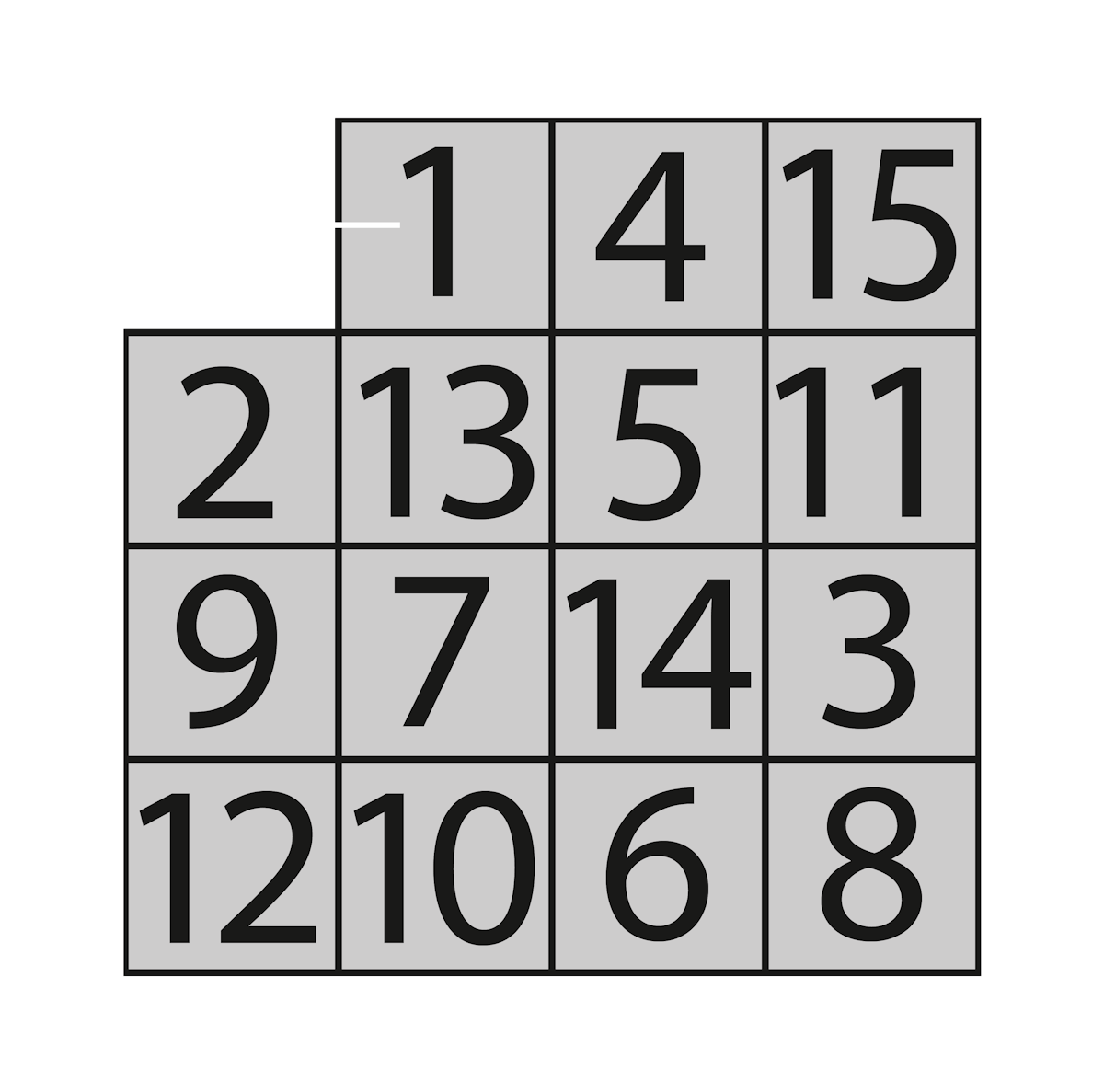
Sliding Puzzle is a brain teaser aimed at developing spatial imagination and the ability to build sequential strategies.
Number of Players: 1
Game Equipment:
- A game board consisting of 15 movable square tiles numbered from 1 to 15, and one empty space.
- Physical or electronic version of the game.
Basic Rules:
- At the start of the game, the tiles on the board are mixed up, and the player must arrange them by moving them into the empty space to restore the numerical sequence.
- The player moves the tiles one space up, down, left, or right into the empty spot.
- The game continues until the tiles are arranged in the correct sequence.
Objective of the Game: Arrange the tiles in ascending order of numbers, creating an organized game board.
12. Minesweeper

Minesweeper is a game that tests attentiveness, the ability to calculate combinations of numbers, and logical thinking.
Number of Players: 1
Game Equipment:
- A computer or mobile device with the game "Minesweeper" installed.
- A mouse or touchscreen for control.
Basic Rules:
- At the start of the game, the playing field is a grid of covered cells.
- The player clicks on cells, trying to avoid "mines."
- When a player clicks on a cell, it opens, revealing a number that indicates how many mines are in the adjacent cells.
- If a player opens a cell with a mine, the game ends in defeat.
- To win, the player must open all cells that do not contain mines.
- Players can place flags on cells where they believe mines are located to avoid accidentally clicking on them.
Objective of the Game: Open all the safe cells and avoid the mines.
13. Hangman

Hangman is an engaging word game focusing on language knowledge, attention, and logical thinking, where players try to guess the chosen word by naming letters before the "hangman" drawing is completed.
Number of Players: 2
Game Equipment:
- A sheet of paper.
- A pen or pencil.
Basic Rules:
- One player (the host) thinks of a word and draws dashes on paper corresponding to the number of letters in the word.
- The other player suggests letters that might be in the word.
- If the suggested letter is in the word, the host writes it above the corresponding dashes.
- If the letter is not in the word, the host begins drawing the "hangman" (usually consisting of 6-10 parts, including head, body, arms, legs, etc.).
- The game continues until the second player either guesses the word or the "hangman" drawing is completed.
Objective of the Game: Guess the word before the entire "hangman" is drawn.
14. Paper Football
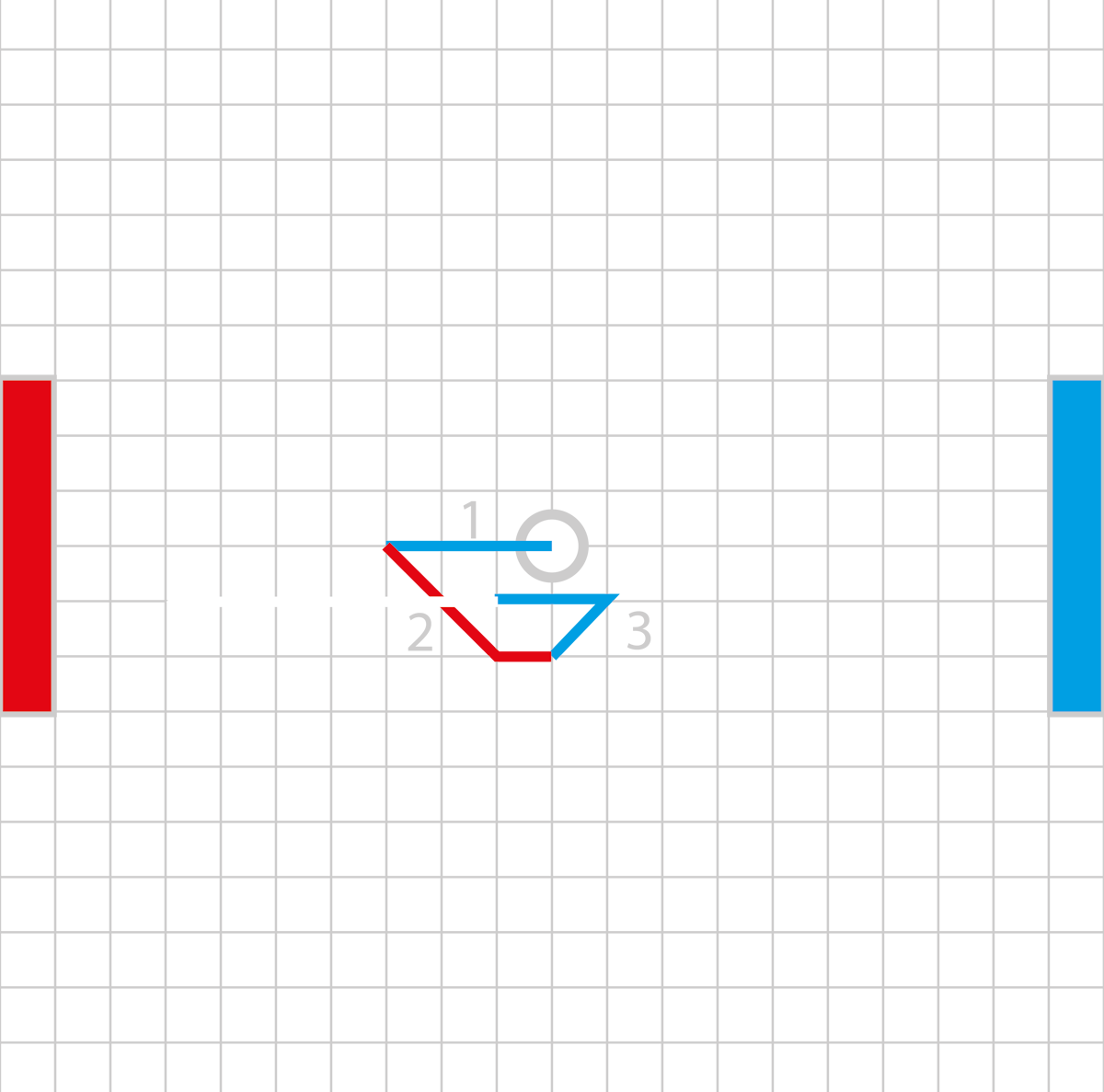
Paper Football is a game that develops agility and quick decision-making skills.
Number of Players: 2
Game Equipment:
- A sheet of paper used as the playing field.
- A pen or pencil.
Basic Rules:
- Players draw goals on the paper sheet, whose size depends on the size of the sheet and the grid cells (usually six or eight cells).
- The game starts from the center of the field. The first move is determined by a draw.
- Each turn consists of drawing a line three cells long, which can be straight or zigzag and drawn diagonally or along the edge of a cell.
- Players cannot cross or touch lines already drawn, except for penalty kicks.
- If a player cannot make a move, the opponent takes a penalty kick – a line six cells long in any direction.
- If after a penalty kick the ball stops on an already drawn line, or the second player cannot make a move, another penalty is executed.
- The game continues until a goal is scored.
Objective of the Game: Draw lines to move the ball across the field, aiming to score a goal in the opponent's goal while blocking their ability to score in yours.
15. Checkers

Checkers is a classic board game that requires tactical, strategic thinking and the ability to anticipate moves in advance.
Number of Players: 2
Game Equipment:
- A checkerboard (or a sheet of paper with a drawn grid) with 64 alternating black and white squares.
- A set of checkers: 12 pieces each of black and white colors (can be cut out of paper or cardboard and colored in distinct colors).
Basic Rules:
- Players place their checkers on the dark squares on their side of the board so that a black square is in the lower left corner.
- Moves are made alternately, with players moving their checkers diagonally forward one square to free dark squares.
- If a player's checker reaches the last horizontal line on the opponent's side, it becomes a "king" and can move any number of squares diagonally.
- Opponent's checkers can be "captured" by jumping over them diagonally to a free square immediately behind them.
- The game continues until one of the players runs out of moves or his checkers are completely "captured."
- The winner is the player who first "captures" all the opponent's checkers or leaves them with no possible moves.
Objective of the Game: Achieve victory either by eliminating all the checkers of your opponent or by positioning your pieces in such a way that the opponent cannot make any further moves.
16. A New Game Created by ChatGPT: Tic-Tac-Toe of Fortune

Assess the creative potential of artificial intelligence! This game might become your new favorite.
Number of Players: 2
Game Equipment:
- A 6x6 cell game board.
- Two dice.
- Pieces for crosses and noughts (or pens of different colors).
Basic Rules:
- The first player throws one dice, then the other. Each die corresponds to one coordinate on the game board (the first for the row (X), the second for the column (Y)). After rolling both dice and placing their cross or nought, the turn passes to the second player.
- The spot where a player places their symbol is determined by the numbers rolled on the dice. For example, if the dice show 2 and 5, the player places their symbol in the cell at the intersection of the 2nd row (X) and the 5th column (Y).
- If the cell is already occupied, the player skips their turn.
- If a player rolls a double (the same number on both dice), they get to make a move on any free field.
- The game continues until one of the players forms the required row (winning condition) or until all free cells are occupied (condition for a draw).
Objective of the Game: To form a row of three of your symbols vertically, horizontally, or diagonally.
Enjoy the Game!
We hope you found this list of games similar to Tic-Tac-Toe useful and that it helps you discover new gaming horizons. If you still haven't found a game to your liking, we suggest reading our compilation of the most interesting versions of Tic-Tac-Toe at this link.
Enjoy the game and let each match be a new adventure for you!

















